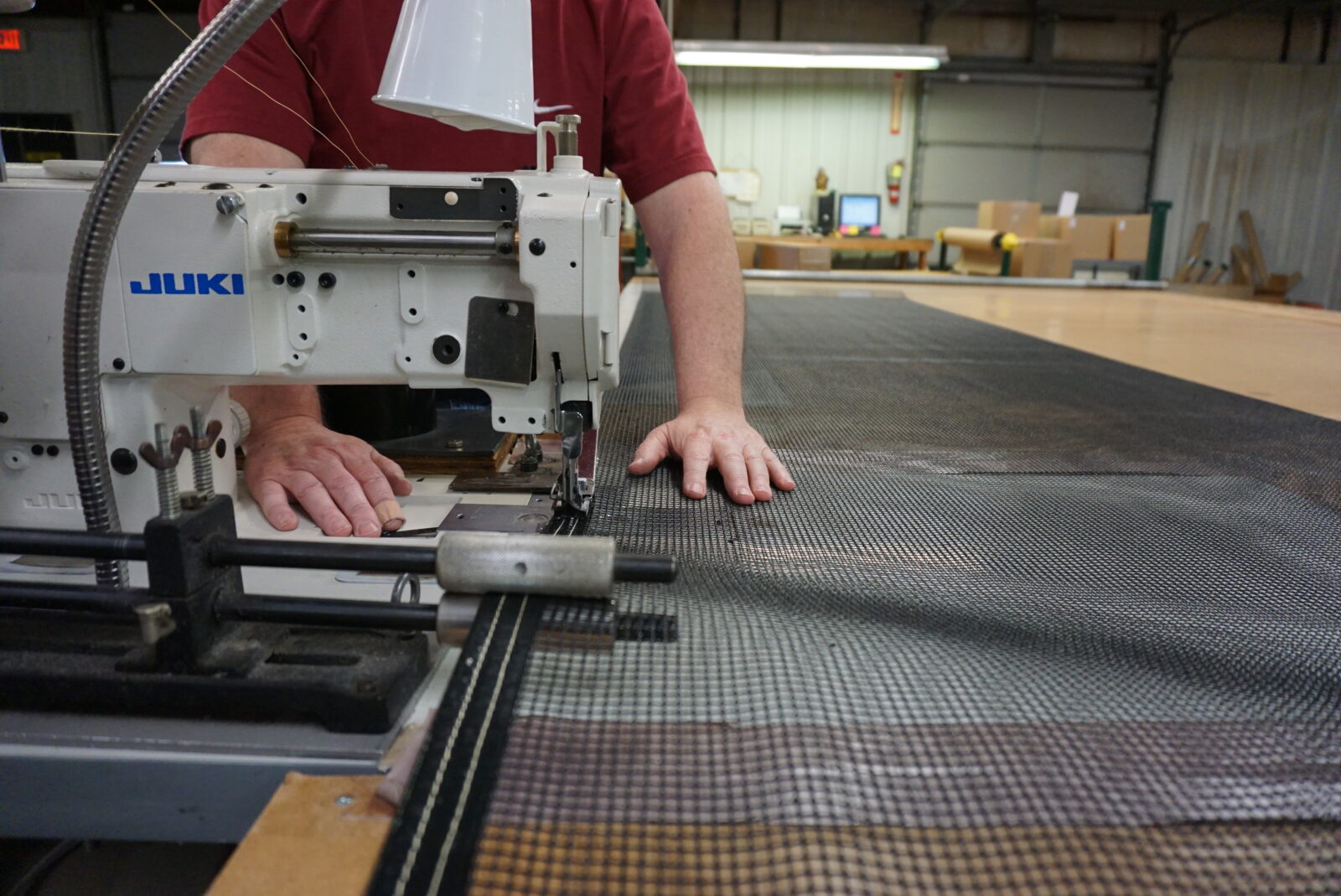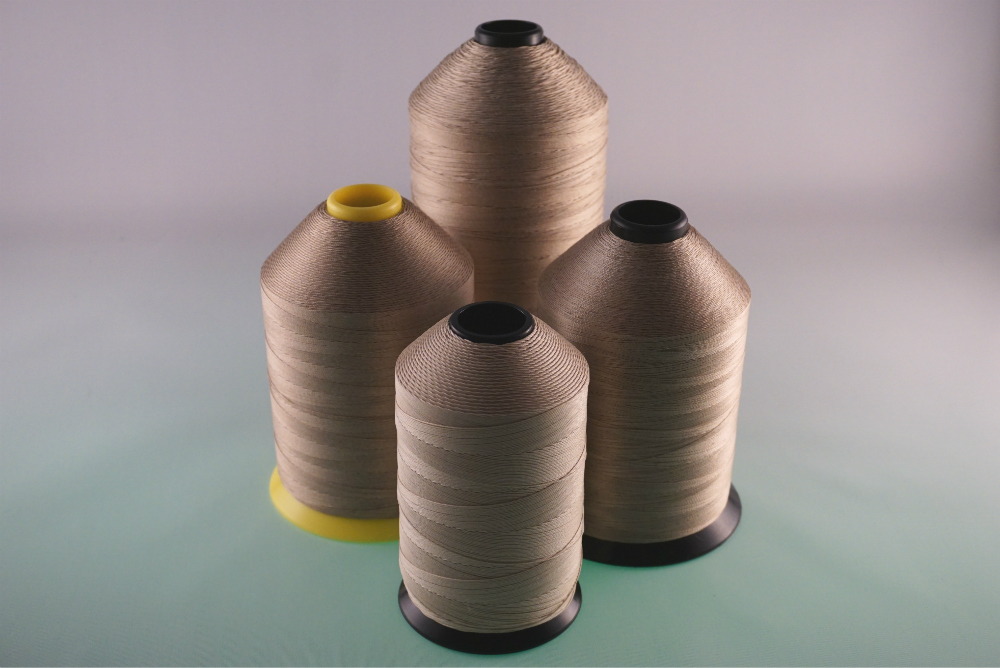We get some interesting opportunities here at W.F. Lake Corp.! I’ve touched on many of our unique capabilities in our PTFE coated fiberglass sewing thread operation, where we can twist in wire with Kevlar* or fiberglass, make colors of fiberglass yarns, make colors of braided PTFE coated fiberglass draw cords, etc. Today we’ll take a look today at some of the interesting PTFE coated fiberglass belts we manufacture.
We sometimes refer to Custom Products as PTFE coated fiberglass belts (or commonly Teflon* coated fiberglass belts), but they really are custom fabricated combinations of materials designed for unique applications. All of this starts with a conversation, and that conversation usually begins with “can you guys make something that will ‘fill in the blank’??”. Our unique capabilities in our belt department enable us to combine materials in unique ways to solve tricky problems.
For example, we make a “Rotary Kiln Seal” that combines PTFE coated Kevlar*, PTFE coated fiberglass fabric, and PTFE coated fiberglass sewing thread into a high temperature gasket for a rotating kiln. This seal had to operate in a high temperature and high friction environment for months at a time. The fabric provided reduced friction against the hot face of the rotating kilns while the Kevlar* worked to reinforce the outer face. Of course, our fiberglass thread held it all together at extreme temperatures. This kiln seal did not look anything like one of our PTFE coated fiberglass mesh belts, but we used those same capabilities to make it happen.
In another case, a customer asked if we could put “cleats” on a PTFE coated fiberglass belt. Cleats? Sure, but what are we going to make those out of those? This belt had to operate at 500 deg. F in a curing oven. Operating temperatures of 500 degrees Fahrenheit rule out most belting materials, but not PTFE coated fiberglass. Still, we had never put cleats on one of our belts. Interestingly, the cleats were needed because this belt was required to run up a slight incline and product would slip down the belt if no cleats were installed. So, we made up some samples and settled on standing cleats 2” tall made with layers of PTFE coated fiberglass laminated together (essentially a small board of PTFE coated fiberglass). We bonded and sewed those cleats to a belt material and the problem was solved!
I could go on, but the point is that when it comes to PTFE coated fiberglass belts (or custom fabricated products) we are able to combine our unique processing capabilities with the wide range of materials we manufacture and come up with some pretty creative solutions. Since we perform all these operations in-house, ideas turn into samples quickly. The best of those ideas and samples often become unique products to solve your most demanding application needs. Give us a shout or zing us a note and we’ll get the ball rolling!






